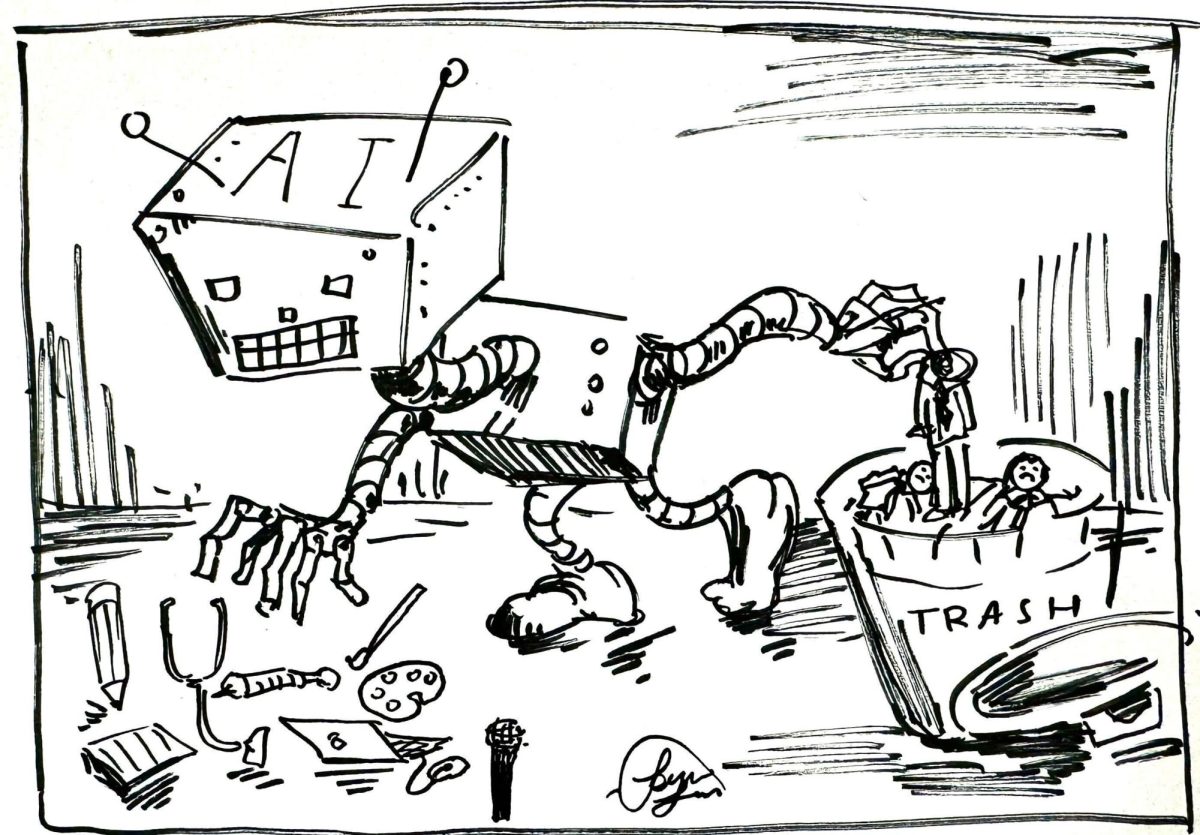Over the last few years, artificial intelligence has risen both in prevalence and in ability, raising questions of how its capabilities could displace the jobs occupied by humans. With this, workers from a diverse array of careers anxiously await AI’s encroachment.
One of the largest controversies surrounding AI is what area of the workforce will be affected the most: blue collar or white collar. Some say blue collar work is less susceptible to AI infiltration, as it requires man-made labor, while white collar jobs can be learned by AI and applied to similar situations. Others argue white collar work requires a greater depth of understanding that AI can’t reach.
The difficult truth is that artificial intelligence won’t simply just affect one or the other: it’ll be widely detrimental to both.
Blue-collar jobs, traditionally associated with manual labor, are predicted to be less impacted by AI.
Already, industries such as fast-food and retail, have been infringed upon by AI, with common and simple tasks converted to automated machinery. Things like flipping burgers, frying french fries, and making smoothies have already been replaced by robot prototypes at places like Sweetgreens and Sam’s Club, learning to take order requests from customers and interpret them to create the appropriate food—eliminating the need for human workers.
Retail has implemented services such as Amazon Go, which allows customers to simply walk out with the items they need and be automatically charged by cameras that detect faces linked to accounts as well as the items held in their arms. Other online features like artificial “fitting rooms” use the measurements given by the customer and apply them to the algorithms they’ve created to show how specific garments look with the given measurements. These features allow customers to try on clothes from the comfort of their homes and reduce the need for retail workers.
While this may be beneficial to some customers, the diminishing need for physical workers has the potential to cost many people their jobs, and with it, their livelihoods.
These effects extend to white collar workers as well. For years, we have been trying to shift education to focus more on STEM, as a means to boost the economy and meet the higher demand. However, fields like computer science will become easily replaceable as AI sifts through millions of lines of previously written code and solves issues at a rate much faster than humans have the capability to.
Even in the jobs that require arduous mental labor such as law, artificial intelligence can dismantle the need for lawyers, filtering through endless pages of documents and rapidly finding evidence or building arguments. Multiple law firms have begun implementing Harvey AI, a generative artificial intelligence that assists lawyers with research, drafts, analysis, and more.
Even for the more complex aspects of law, AI has the capability to study trends in decision-making and arguments from previous cases and use them to assemble their reasoning for future cases as well as forming questions to ask witnesses.
One of the biggest impacts, however, can be seen in the world of healthcare, where AI has been used to detect injuries and diagnose diseases by analyzing scans and interpreting symptoms from patients.
After interpreting these scans and symptoms, machine learning allows for it to go through an array of procedures and select the one most fitting. Omaha CHI Health and Salt Lake City’s Intermountain Healthcare are hospitals that are currently working towards developing and implementing programs that make bedside diagnosis.
Promoting procedures where humans and AI work together, such as humans analyzing graphs and visuals created by AI for data science, or structurally safe architectural plans designed by AI and built by humans, will allow us to both grow from the things artificial intelligence has to offer and enhance the impact of real people.





